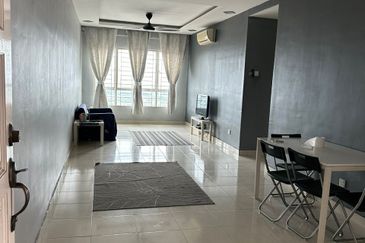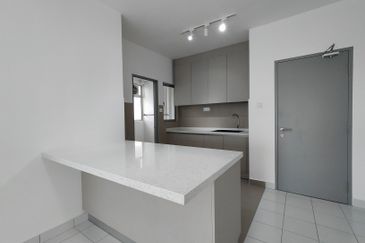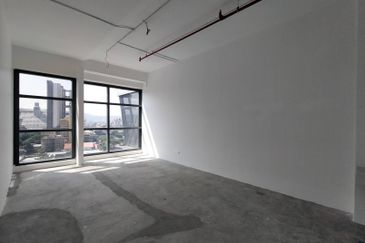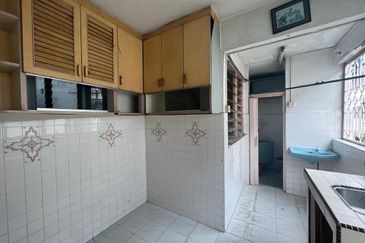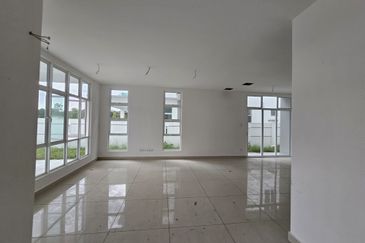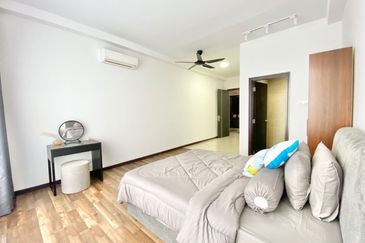THE year has been mixed for property markets around the world in terms of performance due to economic conditions and government policies.
Next year, these two factors will continue to impact key Asian property markets such as Hong Kong, Singapore, Shanghai and Beijing. These markets have seen skyrocketing prices in the past few years, and governments had to introduce cooling measures. While experts believe there is still upside potential in certain property segments, their growth could be hinder by the aforementioned factors, particularly government policies.
Within Asia-Pacific, Australia saw a strong investment market while leasing, office and retail markets were challenged. Australia is expected to remain attractive to foreign and domestic investors as the country moves away from mining to focus on other sectors. However, problems of economic transition may result in lacklustre fundamentals.
Meanwhile, New Zealand’s property market performed well in 2013. New Zealand’s economic expansion will strengthen the property market and improve investor confidence.
Ho Chi Minh City’s property market saw a busy year, aided strongly by continued monetary easing. Next year, the residential market is expected to continue to improve gradually as mortgage costs have reached its five-year lows. The Vietnamese government’s support for affordable housing is also expected to feed through to the people. However, the transactions will pick up slowly as market confidence remains low.
The Mumbai property market did not fare as well in 2013 because of India’s economic conditions. Next year, the residential segment in certain “overheated” locations in the city is expected to see a correction, thus boosting demand. Another bright spot is the possible introduction of real estate investment trusts (REITs) in India, which can attract investors to Mumbai’s commercial sector.
In the US, the New York condominium subsector had a good year which saw demand outstripping supply. This was driven by the improving US economy and low interest rates, among others. Condominiums will continue to attract investors next year. However, rising interest rates, high unemployment rate and negative gross domestic product reports could affect buyers’ confidence.
Read on for a review of the real estate market this year and what’s to come next year by consultants in several countries. 
Shanghai, China
Carlby Xie
Head of China research
Colliers International
The Chinese government implemented further residential property curbs this year. The government’s attitude remains clear — continually curb investment demand, restrict some home upgrading demand and ease home prices. In the overall residential market, transaction volume increased, while prices grew 5% year on year as at end-October. In contrast, in the high-end residential market, transaction volume increased but prices decreased 11.8% y-o-y.
The year saw a balanced supply-demand relationship in the Grade A office sub-sector. However, 1H2013 saw weaker absorption due to the economic situation as well as a tighter budget for many occupiers. Market performance improved in 2H2013. Rents rose, mainly driven by the Pudong sub-market with financial institutions, especially domestic firms, actively sourcing and securing spaces.
Meanwhile, the limited availability of Grade A office space in the downtown area, which has a vacancy rate of 7.8%, also stimulated rental growth. New set-ups and expansions were less active than relocation and renewals.
In the business park sub-sector, despite the growing new supply, demand from pharmaceutical, automobile, IT and high-tech manufacturing ensured a strong performance throughout this year. By end-3Q2013, the average vacancy rate hovered around the same level as last year, at 14.5%.
Business park rent continued to grow since 2011, reaching RMB3.48 per sq m per day by end-3Q2013. By our estimation, rent should continue to grow in 4Q2013, leading to a further increase in capital values.
The retail sector saw abundant new supply this year, and demand from retailers for prime retail space remained fairly strong. The demand came primarily from fashion, food and beverage (F&B), accessories, supermarket and department store businesses. The vacancy rate decreased by 0.4 percentage points y-o-y in 1H2013 but is expected to edge up in 2H2013. Rent in 1H2013 increased 1.1% y-o-y and a further increase in 2H2013 is expected.
Meanwhile, the leasing market in the logistics sector turned active in 2Q and 3Q2013, evidenced by a growing number of leasing transaction during this period. Demand for new leases came primarily from third-party logistics providers, and e-commerce and advanced manufacturing industries. Asset performance continued to strengthen during the year, attracting a growing number of investors to source and conclude investment deals in Shanghai. In addition, the establishment of the Free Trade Zone had a positive impact on this market.
In the coming year, we expect the office sector to remain attractive as it has been traditionally. Retail and mixed-use developments with growth potential will also attract investors with strong financial background and asset management expertise, while business park offices will attract a growing number of investors.
However, the supply pipeline in the business park office and retail sectors, decreasing consumer sentiments and outlook, and the perception that the government is dragging its feet on reform could put a damper on growth.
If the government’s economic reform and its initiatives such as the establishment of the Free Trade Zone in Shanghai, rural property reform and the loosening of the one-child policy were to go ahead, the property market will perform well.
Beijing
In the Grade A office sub-sector, the landlords’ confidence in upholding high rental values have dropped, resulting in a continued decline in overall net effective rent for a second straight quarter in 3Q2013 to RMB316.6 per sq m per month.
Weak demand for Grade A office space was reflected in the low net absorption figures from the first three quarters with a negative net absorption of 12,630 sq m being recorded in 2Q2013. However, despite the weak demand, overall vacancies remained low at 3.8% in 3Q2013 due to a lack of significant new supply coming on stream during the first three quarters of the year. In 2Q2013 and 3Q2013, the office investment market was very active with three en bloc transactions concluded in each quarter.
In the retail sector, while the majority of macroeconomic indicators maintained healthy increases throughout the year, a cautious sentiment among consumers and retailers triggered by uncertainties of a possible wider economic slowdown negatively affected overall demand and net absorption of prime retail space.
The weak demand in the retail sector translated into a quarterly, negative net absorption of 113,200 sq m and an overall vacancy rate of 9.3% by end-3Q2013. Key demand generators included mass market retailers focusing on fast fashion and F&B operators targeting the middle class. However, despite the weaker demand, rental values continued to trend slightly higher from RMB823 per sq m per month from the start of the year to RMB845 by end-3Q2013.
In the residential sector, sales of both high-end villas and luxury apartments continued to climb higher, albeit more slowly despite the multiple cooling measures enacted by the Beijing municipal council.
However, the high-end luxury residential leasing market remained sensitive to the overall weaker economic indicators and continued its downward trend this year. This resulted in the overall rental value decreasing both y-o-y and quarter on quarter by end-3Q2013 for villas, luxury apartments and serviced apartments.
As at end-3Q2013, the capital values for villas and serviced apartments increased 2.64% and 3.5% q-o-q respectively, while luxury apartments remained flat.
Meanwhile, demand for Beijing’s prime logistics market was stable this year. Demand came from companies in the e-commerce, third-party logistics, trading and pharmaceutical sectors. Overall rental values trended upwards in the past three quarters, climbing RMB36.2 per sq m per month by end-3Q2013, while vacancy remained low.
Given the limited land supply to develop logistics properties in Beijing in the recent years, many warehouse developers turned their attention to purchasing land in nearby cities, particularly in Langfang and Tianjin.
Overall, despite mix to weaker leasing performance across almost all sectors, capital values continued to hover near record high levels, indicating strong overall fundamentals in the industry.
The industrial sector stood out as the overall best performer due to indication of the government’s support for the sector. The government has made overtures to the necessity of developing more sophisticated logistics properties and related infrastructure. In addition, the continuing rapid rise of e-commerce will create the demand necessary for further growth.
We expect the overall office average vacancy rate to edge up in the short to medium term next year, resulting in a leasing market that should be more favourable to tenants. Landlords are likely to be more willing to negotiate lower rents to attract or retain high-profile tenants in the face of market uncertainties. However, given the limited investment opportunities in the traditional core areas, capital values will remain stable in the next two quarters, while yields will continue to be moderately compressed.
The demand for retail located in prime areas with a mix of mass market, F&B, fashion brands and entertainment, and those with professional property management teams will continue to be strong in 2014. It will also benefit from low vacancy rate and high rental values.
Retail properties in less optimal locations will continue to see their leasing figures diverge from competitors in prime areas, and will come under strong pressure to adapt through repositioning, renovation and improving services.
As for the residential sector, government restrictions have yet to produce the desired effect of cooling the residential sales market. Indications are that the city’s recent restrictions on the supply side through auctioning off land with price ceilings and price-capped housing requirements might have become the norm.
On the leasing of villas, and luxury and serviced apartments, demand will continue to be sensitive to cyclical factors such as difficulty of obtaining work and residential permits as well as the size of the CEO and expatriate packages.
In 2014, the industrial sector will likely benefit from a convergence of five key factors — overall low vacancy, limited land supply, limited supply of advanced logistics facilities, the growth of the e-commerce sector and government backing.
Office and retail in prime central business district locations and the industrial sector are expected to attract investors due to the limited supply of land. The industrial sector will also benefit from the strong growth in e-commerce and government backing.
In general, rural and suburban counties in Beijing that have good access for purchase and redevelopment or ground up development for mixed-use properties might also attract investors’ attention, if the government succeeds in implementing the major items from the Third Plenum.
However, fewer jobs creation, decreasing consumer sentiment and outlook, and the perception that the government is dragging its feet on reform could hinder growth. 
New York, US
Wei Min Tan
licensed associate real estate broker
Castle Avenue team at Rutenberg Realty, New York
There was a shortage of condominium supply and a lot of demand from both local and foreign buyers in 2013. This was driven by the improving US economy, buyers wanting to lock in low interest rates, and global investors wanting to take advantage of Manhattan as a safe haven for asset diversification. The residential condominium market appreciated 6.7% in 3Q2013 from a year ago, and sales volume was up 20%.
Luxury residential condominiums was the best performing sector. In Manhattan, residential properties tend to perform better than commercial properties because the former are driven by fundamental valuations and the psychology of the market. Psychology refers to buyers paying a high price because they like the view of the unit and so forth. Commercial properties do not benefit from the psychology component. Within the residential segment, condominiums — as opposed to co-ops — performed the best due to the low supply and high demand from local and foreign buyers.
The new year should have continued stable prices but maybe less of a frenzy compared to 2013. Residential condominiums will attract investors. Most global high net worth individuals buy residential condominiums because they are easy assets to own without much management hassle. Condominiums do not need board approval for buy/sell transactions and the owner is free to rent out the property at any time. Co-ops, which have a different legal structure, do not have these features. Most of our clients have their core business, and owning a Manhattan condominium is just a way to diversify their portfolio.
Buying property is a confidence indicator. Anything that would affect buyers’ confidence such as negative GDP reports, rising interest rates or higher unemployment would hinder the property market. The shortage of supply, global demand and outlook of the US economy would be positives for Manhattan. Manhattan is already the number one global city in the world. However, from a price perspective, it is only ranked eighth behind cities such as London, Hong Kong and Singapore.
 |
Hong Kong
Simon Lo
Executive director, research & advisory Asia
Colliers International (Hong Kong)
The year saw overall weak sale prices with downward adjustments of between 1% and 9%. However, commercial rents were more resilient, showing mild growth of 1% to 7%.
The industrial/logistics sector was the best performing real estate sector this year. Its rents were supported by buoyant leasing demand from logistics operators.
We expect all property sectors to undergo consolidation next year and capital values are predicted to fall between 7% and 11%. Brand new office developments in decentralised locations are likely to attract investors next year. They are less expensive compared with assets in core CBD locations and have long-term capital growth potential upon full completion of infrastructure links.
However, uncertainty on the local regulatory environment, compressed investment yields and the lack of investment assets for sale could hinder growth.
Australia
 |
Dominic Brown
Head of Southeast Asia, Australia and New Zealand research DTZ
As a whole, the Australian property market this year has been characterised by a buoyant investment market that is not supported by a strong leasing market. The year has seen the resurgence of Australian real estate investment trusts back into net purchasing territory, thereby providing increased competition to offshore investors who are continuing to target Australian assets in light of the higher yields on offer and the transparency of the market.
Consequently, investment volumes over the first nine months of this year matched those for the whole of last year. With this increased investment activity, there has been modest yield compression but this has been limited to higher quality assets with little near-term lease expiring risk.
The leasing market, across all sectors, has been more lethargic. The slower GDP growth, rising unemployment rate and lacklustre business confidence have dented tenant demand, and therefore suppressed rental growth.
The downturn in the resources sector has significantly impacted office markets that are heavily reliant on this sector for growth, such as Brisbane and Perth, resulting in sharp increases in vacancy and rising incentives.
Retail centres have also suffered as a result of sustained high levels of household saving, with the exception being supermarket anchored centres with little exposure to discretionary expenditure. The industrial sector, specifically distribution and warehousing, also performed well this year following growth in online retailing.
Of the three main property sectors, the industrial sector — led by warehousing and distribution — was the best performer in Australia driven by income growth and a small amount of yield compression.
With regard to the occupier market, the outlook next year remains challenging in the first half of the year, though some improvement is forecast towards the end of the year and into 2015.
In the office sector, the lack of new supply in most markets next year will assist in limiting further increases in vacancy. Furthermore, the global economic recovery is forecast to progress in 2014, leading to improved business confidence and stronger employment growth.
In an Australian context, Sydney is expected to see the benefits of the improving global situation first, followed by Melbourne. In contrast, without a significant recovery in the resources sector, demand is likely to remain subdued in Perth and Brisbane.
Consumer sentiment has increased following three consecutive months of improvement. Looking forward, continuing improvement in sentiment is expected to translate into increased retail expenditure, signalling an improvement in retail trading conditions and therefore an improvement in the retail sector.
The industrial sector has proven to be a defensive asset class, with the exception of manufacturing, providing strong income returns to investors. The outlook for next year is for more of the same.
Australia is expected to remain attractive to domestic and overseas investors. However, the lack of available stock on the market is likely to hamper overall investment activity. Therefore, volumes next year are forecast to be down on 2013 levels. Furthermore, investors will likely need to move up the risk curve and seek assets outside of the central business district (CBD) locations in order to deploy capital.
On a “fair value” basis, all asset classes offer opportunities for investors next year. However, any increase in bond yields will temper the attractiveness at a market level.
The office markets of Sydney and Melbourne are the largest nationally and with respect to Sydney, the most liquid, thereby offering investors a range of entry and exit strategies.
The industrial sector has proved to be defensive, offering a long-term stream of income. However, the building investment scale in this sector remains a challenge for investors with large allocations.
Retail centres with low exposure to discretionary expenditure are likely to remain attractive to investors, as will catchment dominant sub-regional centres.
The Australian economy is undergoing a period of transition away from mining and resources to other sectors. Growth in these other sectors, such as construction, tourism and housing, has yet to take hold, although there are signs of recovery in the housing market albeit somewhat patchy.
Consequently, the near-term economic outlook is below trend growth. A protracted and uneven transition will keep economic growth at below trend levels, resulting in lacklustre fundamentals. Equally, any derailment in global economic recovery will dampen business confidence and delay any expansionary plans.
In contrast, a swifter and stronger economic transition will boost business confidence and consumer sentiment, driving stronger employment growth. This will then flow through to an increased demand for office space and an improvement in retail expenditure, supporting growth in office and retail markets. 
Ho Chi Minh City, Vietnam
Marc Townsend
Managing director
CB Richard Ellis Vietnam
The continued monetary easing gave the real estate market reason for cheer this year. Lower interest rates increased the possibility of mortgage lending rising and provided an impetus for investors to adjust asset allocation away from deposit accounts into other investment channels.
As the year progressed, the residential market saw a sharp increase in the number of projects being advertised, advertisements placed and new launches. About 5,000 units were launched in Ho Chi Minh City (HCMC) in the first 10 months of this year, a significant 40% increase y-o-y.
Most of this supply was in the affordable segment, accounting for 74% of the new launches or secondary phase launches. The rise in the number of new launches represented some developers’ renewed confidence in the market.
Their faith in the market was repaid as the new launches saw some notable buyer activity at both the affordable and high-end developments. The first nine months of this year saw 4,500 units sold, almost double the figure in the corresponding period of last year.
Some developers now offer good payment terms, even longer terms than initially expected. In the old days, buyers had to make payments during the construction of the building, but now once a building is completed, buyers have two to three years to complete the payment. That is a good thing as the mortgage rate is still very high and the home loan interest rate is between 12% and 14%.
Prices in the broader existing apartment for sale market have fallen some 30% from the peak in 2007. Prices have now reached a level that the market deems affordable. Specific projects that are well located, have strong support from the developers or are priced to meet buyer expectations are seeing higher sales volume.
On the commercial side, this year was a busy year for the HCMC office market with a number of significant office transactions being closed (20% higher y-o-y) as tenants took advantage of what was seen as a market bottom. The recalibration in rentals made the country’s office market comparable with that of its regional peers and thus provided multinationals with genuine cost incentives to consider market entry, consolidation or even growth.
The retail market continued to see an interesting mix of positive and negative news. Retailers remain bullish on the market, continuing to increase their access to the strong demographics of the city. However, the headline numbers produced by CBRE in the latest quarter appear to show a different story for landlords, which have seen tenants moving out and rentals softening.
With no new supply coming onto the market, the negative net absorption reflected the tenants’ dissatisfaction with the rentals charged at major shopping centres and the amount of foot traffic that they are able to generate.
However, the retailers did not actually shut down their business; they simply relocated, moving out of the overpriced CBD retail centres to high-street shophouses in the centre or on the periphery, which offer more affordable rates and attract a larger number of shoppers. These retailers were finding it increasingly difficult to justify the rentals charged by malls in the CBD, which are only slightly less than those in Bangkok, where the foot traffic and spending power is significantly higher.
This year, the office sector looks more positive than the residential sector. The first eleven months were busy months for the HCMC office market. Office rents there may rise slightly as vacancy falls below 10% and new options on the horizon look slim.
Meanwhile, residential prices over the broader existing apartment for sale market fell 30% compared with the peak in 2007. Retail rentals saw a slight decrease during the year. The selling price or rental rate in both sectors is expected to remain stable next year.
For the residential sector in the new year, potential buyers will continue to be mindful of the company behind the projects. In a market with hundreds of developers, buyers will not only look at prices, but also the developer, construction status, payment schedule, product quality and location. Condominiums with more affordable prices will likely be favoured compared with villas and land plot.
In the commercial sector, the performance of newly completed buildings in the last two quarters has revealed a new trend in building development. Those buildings with sustainable and efficient design attract more tenants. As long as a property can satisfy in terms of quality, design and location, it will attract tenants as there is still demand for high-end office space in the market.
High-end housing projects with affordable prices such as those in District 2 and 7 in HCMC are likely to attract investors next year. For office space, there have been some recent cases of decentralisation from key prime areas as a result of the relatively high asking prices in the CBD. For retail, high street corners will be further dominated by foreign brands looking to expand their business.
The residential market will continue to show gradual improvement next year with mortgage costs now having reached five-year lows while the government’s support package for the social and affordable housing market will start to feed through.
However, market confidence will remain low so the pick-up in transactions will occur gradually. Hence, in our outlook for next year, we expect the recovery to gather pace only in the second half as macroeconomic conditions improve while prices for real estate projects will take even longer to recover. The strategies being employed in the condominium sector in HCMC will continue and will spread to Hanoi where the market is seeing more projects being fitted out.
For the office market, because there will be new supply coming on stream in HCMC until at least the first quarter of next year, there is little reason to suggest any softening in rents and reason to believe some landlords’ positions may strengthen.
 |
New Zealand
Zoltan Moricz
Senior director, research CB Richard Ellis New Zealand
Leasing activity has strengthened this year. This reflects the economy moving from a recovery phase after the global financial crisis into expansion mode. Business and consumer confidence reached long-term highs and have fed elevated levels of occupier activity across all property sectors.
The institutional investment sector was increasingly active during the year and became a net buyer for the first time since 2007. Investment demand has been widely based across both onshore-offshore and institutional-private purchasers although investors generally remained fairly selective. The yield firming trend, which characterised the market since early last year, lost some momentum in the latter part of this year.
After lagging the prime property market in the initial phases of the recovery, the secondary property market performed well, benefiting from the uplift in occupier activity. This resulted in a diminishing vacancy overhang and rental growth. The improvement in secondary occupier market fundamentals was also accompanied by lower risk aversion by investors, which has benefitted secondary yields.
Likely interest rate rises next year will dampen the yield firming pressure caused by improving confidence and occupier market fundamentals. As the economic expansion continues, take-up and vacancy will benefit and will result in strengthening rent growth in most sectors.
The development market will become increasingly active but stock completions will not be high enough to upset the recovery next year. Given positive market circumstances, investor interest will be widespread across most property types.
Mumbai, India
Anuj Puri
Chairman and country head Jones Lang LaSalle, India
Mumbai’s real estate market continued to struggle this year. The country’s challenged economy as well as the macro-economic scenario served to put a damper on all three major real estate verticals — commercial, residential and retail.
As the financial capital, Mumbai is always the first city in India to react to economic dynamics. It is the first to recover when positive headwinds blow and the first to falter when the economic weather turns unfavourable. The much hoped for recovery did not take place this year.
Residential was probably the most negatively impacted sector, with sales spiralling downwards on the back of generally unaffordable prices, despite the fact that new projects were launched at lower rates.
The scenario was slightly better in the emerging far suburbs, where rates are still relatively lower. Navi Mumbai, the city’s satellite city that is not in the Mumbai Metropolitan Region, gave a more positive performance in terms of commercial and residential real estate.
Commercial real estate showed signs of improving health in certain sectors, partly due to a correction in rentals and partly because of a number of corporations’ decision to consolidate in less expensive locations where they can get bigger floor plates.
The performance of the property market next year depends a lot on the global and domestic economic scenario. However, there are indications that there will be a correction in residential prices in overheated locations of the city, which would boost demand to a certain extent.
A good quantum of quality office space is expected to hit the market next year and this supply is expected to attract multinationals that are looking for Grade A commercial real estate. The outlook for retail real estate will remain sombre next year.
The Securities and Exchange Board of India has been giving serious indications of its intention to introduce real estate investment trusts in India. If this happens, commercial real estate in Mumbai would begin attracting a lot of investments next year. Until then, residential real estate in the city’s growth corridors will continue to attract individual investors.
Lack of convincing economic revival would seriously impede the property market in Mumbai, as well as in many of the other metros. A correction in the residential property prices would boost the residential segment.
Singapore
Alan Cheong
Senior director Savills Valuation and Professional Services (S) Pte Ltd
Singapore’s real estate market performed positively across all sectors in 2013. The private residential sector grew from strength to strength until loopholes in the lending criteria under the Total Debt Servicing Ratio (TDSR) framework were plugged in June. The TDSR framework allows a household borrower to use only 60% of his income to service the mortgage.
The public residential market was weak as further limits on loan servicing were imposed. This was followed by a new rule on permanent residents wanting to purchase resale public flats.
Notwithstanding the imposition of further cooling measures and debt servicing limits, the private residential sector continued to shine, particularly properties in the mass market. This was because of strong household liquidity.
Next year, most of the sectors — residential, retail, office and industrial — are expected to trend sideways in terms of prices. The residential sector is likely to show mixed signals with prices see-sawing from quarter to quarter. This is because of the coming changes to the way the government price index is computed.
In 2014, the net price (as in net of rebates and discounts) will be imputed into the index instead of the previous gross price. Therefore, in the switchover, tentatively in 1Q2014, the link-up may give the impression that prices have dropped. That may not be the case as one has to wait for a couple of quarters to know the underlying trend in the new index.
For rents, the various sectors are expected to show dual behaviour with the office and retail segments most likely trending up by about 5% while residential and industrial may dip 5% to 10%. Residential and industrial rents are expected to be soft because of increasing supply and tenants becoming more cost-conscious.
We may witness a surge in strata office and retail space transactions. This is because investors from China have been scouring the market for strata offices to buy. Most will be buying for their own use because they are usually in the commodity trading business and they do not mind paying top dollar for the space.
Government land sales are expected to see heated bids because of the scarcity of private parcels of substantial size for sale. The entry of developers from China is likely to spur established players to submit aggressive bids, given that the former had already shown their hands in a recent government residential land tender of two sites by submitting top bids which were 13% to 16% higher than the second highest.
Too many measures and rules have been imposed on the property market. There is nothing wrong with having new measures that ensure market stability. However, after their implementation, the previous ones are usually not removed. These rules pile on over time and they make real estate investments, particularly in the residential sector, cumbersome, thus entrenching the established players.
With the recent rules on buying a second home, the equity content has been raised to 50%. Also, given that each government land sale usually costs more than S$200 million, new entrants and entrepreneurs will find it an uphill task to take root in the property market unless they have deep pockets. The process of creative regeneration is hindered.
This article first appeared in The Edge Malaysia Weekly, on December 23, 2013.
TOP PICKS BY EDGEPROP
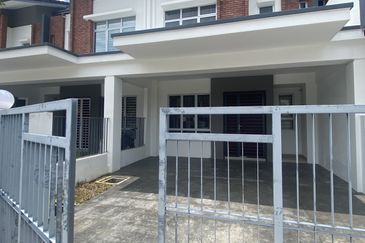
Livia @ Bandar Rimbayu
Telok Panglima Garang, Selangor
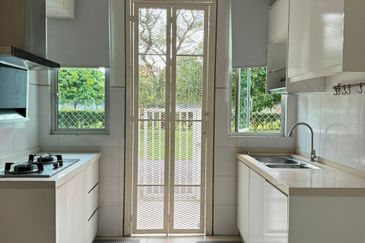
Chimes @ Bandar Rimbayu
Telok Panglima Garang, Selangor
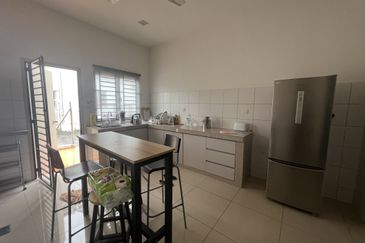
Penduline @ Bandar Rimbayu
Telok Panglima Garang, Selangor

Penduline @ Bandar Rimbayu
Telok Panglima Garang, Selangor

Robin @ Bandar Rimbayu
Telok Panglima Garang, Selangor
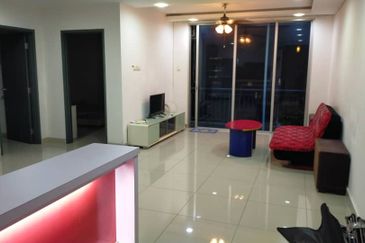
D'Ambience Residences (Ikatan Flora), Bandar Baru Permas Jaya
Permas Jaya/Senibong, Johor

D'Carlton Seaview Residences (Seri Mega)
Masai, Johor

Apartment Tanjung Puteri Resort
Pasir Gudang, Johor

